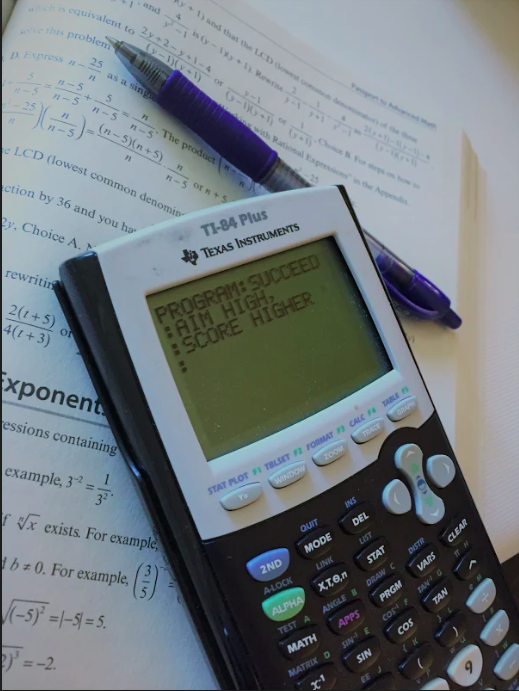THE SAT: CALCULATOR CALAMITY
Here are some calculator tips that will help you master the calculator portion of the SAT!
Ah, the SAT: the daunting, challenging test looming over every high schooler desirous of a future college diploma. Its ruthless math section has been the bane of many a high schooler for generations. Although millions take this test every year, a surprising number of test-takers are unaware of the full capabilities of their second most-useful tool test-taking tool (second to the mathematical powerhouse of the brain). I’m speaking, of course, of the calculator.
The SAT math portion consists of two sections: the calculator section and the calculator-free section. The calculator-free section consists of 20 questions; the calculator section, on the other hand, has 38. From this, it is clear that one who is adept at handling a calculator has a clear advantage over the person at unawares. Test-taking veterans are quick to point out that the calculator is simply an extension of your mathematical knowledge—after all, you cannot perform the Pythagorean Theorem without knowing the formula. These SAT-vets have a point—the first step to mastering the SAT math section is increasing your mathematical awareness. However, a calculator is indispensable for making quick, accurate calculations, solving expressions, and so much more.
The first step to becoming an SAT calculator-master is equipping yourself with the right calculator. This may sound like an easy task; after all, how many calculators could there be? The answer to that question: a lot, more than you would expect. There are, in fact, over 50 calculator models allowed into the SAT exam room! Calculator brands range from Casio, Texas Instruments, and Hewlett-Packard, to lesser-known brands like Datexx and Micronta. However, you are not lost in this calculator-abundant world: the internet is here to help you out. The web is filled with abundant calculatory resources from knowledgeable (and some, admittedly, less-knowledgeable) individuals.
Some commonly-used high-school calculators are the TI-83 and 84. However, these are not the most powerful calculator tools available on the market for the avid SAT-taker. Just the other day I was referred to a calculator I was unaware existed: the TI-89. This calculator can perform a surprising range of tasks, from finding the lowest common denominator of a rational expression to literally solving your equation for you (yes, you heard that right). It can even play Super Mario—that is, if you have the technical aptitude to implement the game in your device! And, as you may expect, I immediately ordered a used 89 from eBay (yes, some of my largest lifetime purchases have been calculators).
So, you have bought your calculator. You may have even entered some rudimental equations in the inviting gray box. However, I will suggest something you may be dismayed to hear: spend some time getting to know the ins and outs of your new friend. Yes, this will involve some work on your part, but trust me—this knowledge will come in handy on test day. You will likely discover that your calculator is more powerful than you had imagined. Remember how I mentioned the TI-89’s ability to solve expressions? As it turns out, many calculators have this function. In the TI-84, it is an ability accomplished by a program called the “solver”; the name adequately suggests its function.
Nobody goes to their job without equipping themselves with the right tools. Imagine if a lawn caretaker showed up to a house without a weed eater! Imagine if when you went into the doctor’s office the nurse had to shove her hand in your throat to make sure your throat was performing correctly! The same rule applies to the SAT. Equip yourself with the right tools, whether it be an increased vocabulary, a knowledge of formulas, or a worn-down calculator. There is some truth in the age-old mantra, “Work smarter, not harder.” If the SAT math section feels like a breeze, do not feel guilty (unless, of course, you scored poorly because you were careless!). Pat yourself on the back for taking some time out of your busy schedule and getting to know an unlikely friend: your calculator.
Sources:
https://collegereadiness.collegeboard.org/sat/taking-the-test/calculator-policy
https://www.msubillings.edu/asc/resources/math/calculators/PDF-89/C89-SolveAndCsolve.pdf
https://codewalr.us/index.php?topic=1819.0







